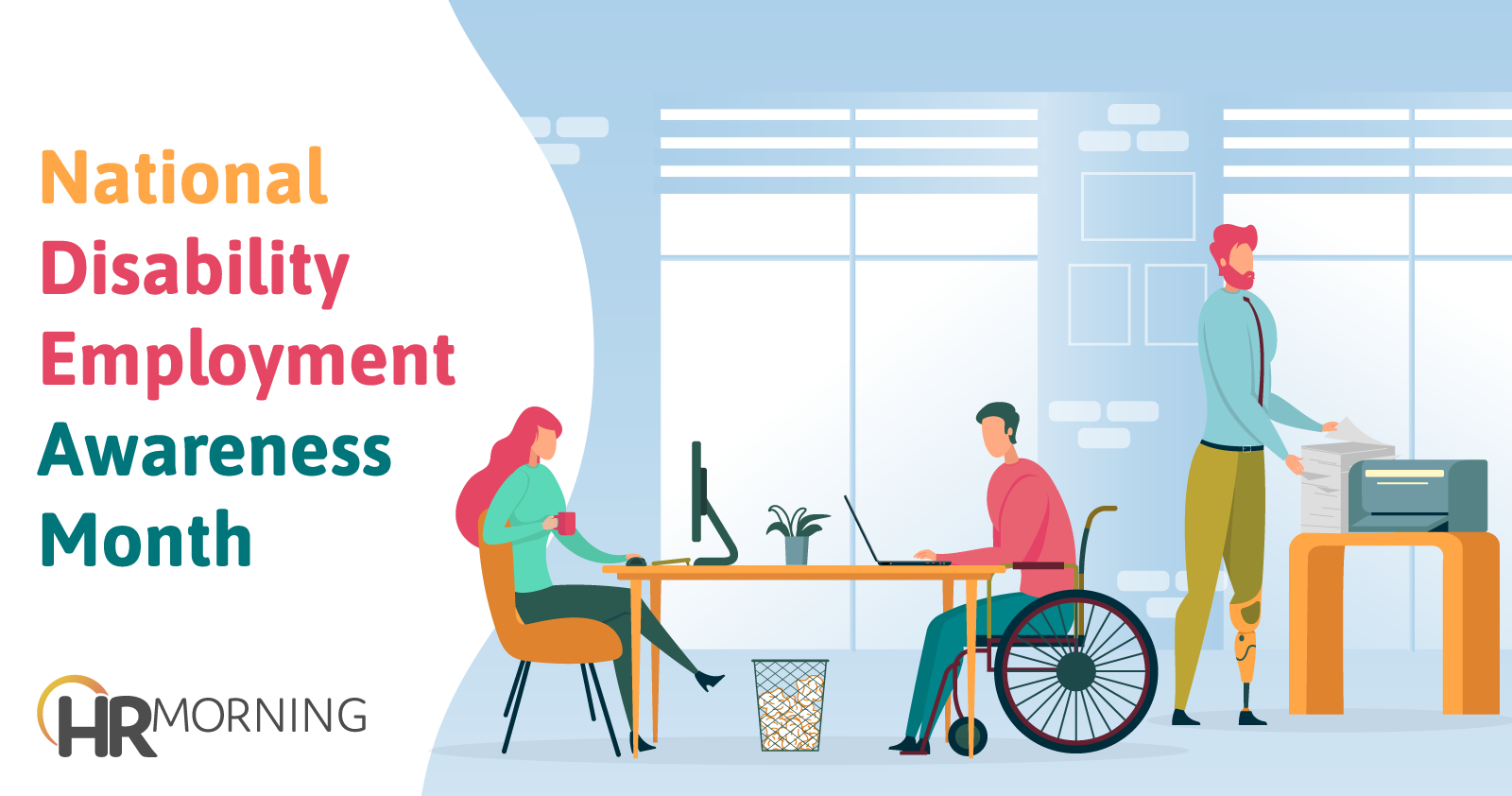Did you know that October is National Disability Employment Awareness Month (NDEAM)? NDEAM aims to celebrate the contributions of workers with disabilities and emphasizes the importance of inclusive employment policies and practices.
The hard truth is that many workers with disabilities still don’t feel like they truly belong. Even when companies strive to make the workplace an inclusive space, many teams can fall short of true inclusion for people with disabilities.
Many employees with disabilities don’t feel comfortable enough to disclose their disability, either. Although 19.1% of U.S. workers have a disability, just 4% of respondents in Disability:IN’s Disability Equality Index (DEI) Report self-identified as having a disability.
Ensuring employees with disabilities have a sense of belonging at work and taking actionable steps toward equity for people with disabilities in the workplace will not only help improve job satisfaction for employees who have a disability, but it will also help your company advance its DEI efforts.
NDEAM is a great time to reassess and revitalize your inclusion efforts for employees with disabilities to turn your intent into impact, but it’s important to remember that inclusion is not achieved in a few weeks. Turn your celebrations into year-long initiatives to support workers with disabilities.
How to begin inclusivity initiatives
“Inclusion of any kind starts with your organizational culture and values,” says Candace Nicolls, SVP, People and Workplace, Snagajob. Candace recommends starting with your organization’s missions and values to make sure they embody inclusive leadership that supports all employees.
You may also want to ask yourself if the mission and values reflect a supportive and inclusive environment. An organization’s values are at the core of who they are, so making sure that inclusion is reflected in them is vital.
Candace also recommends looking at people practices across the employee lifecycle. You may want to make adjustments to people practices, such as:
- Ensuring job descriptions only reflect the requirements that matter
- Providing accommodations for candidate interviews
- Staying objective about performance evaluations, promotions and compensation practices to avoid unconscious bias, and
- Updating benefits when possible to include a range of services.
If you work in an office, make sure that your physical space is inclusive and accessible. It’s important to look at barriers for people with physical disabilities, but it’s also important to consider other accommodations, such as sensory-friendly rooms with low lighting and reduced noise for individuals with sensory needs.
Best practices for supporting workers with disabilities
“Building an inclusive organization is not a one-time initiative, and it takes intent and focus across your company,” says Candace. “People want to feel respected and valued, no matter their ability, and it’s important to build practices that ensure that.”
Some best practices you can implement to make sure you’re supporting employees with disabilities are:
Updating hiring practices: You may want to rewrite job descriptions that have ableist language or unnecessary physical requirements. It’s also important to ensure that interviews are accessible and adaptable for people with disabilities, such as assistive technology for visual or hearing impairment. For managers conducting interviews, provide training to help them avoid bias.
Using people-first language: “In truly inclusive cultures, the language people use matters,” says Candace. “People-first language puts the person before the disability and describes what a person has, not who a person is.” In general, it’s better to go with phrases such as “person with a disability” or “individuals with disabilities.” However, it’s always best to ask when given the chance, as some people prefer identity-first language.
Educating employees: No matter how much HR or managers do, a truly inclusive organization also depends on other employees. Train employees on inclusion efforts such as people-first language and emphasize the importance of creating a psychologically safe environment. You may also want to make sure managers or team leaders are aware of the ins and outs of accommodations and supporting employees with disabilities.


